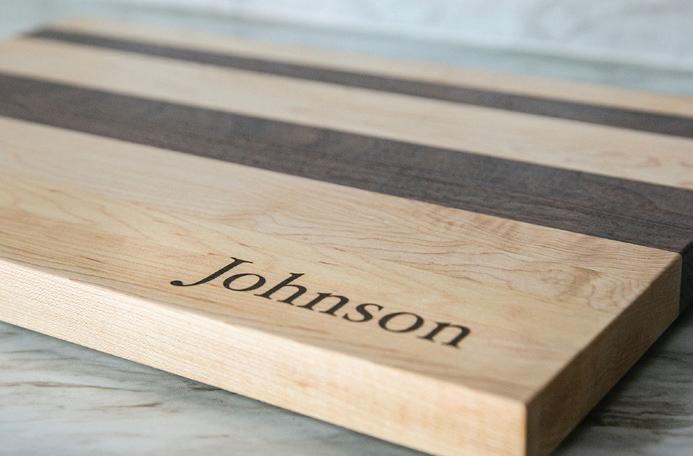
4 minute read
Life and liberty
PHOTOGRAPH BY FABIAN FAUTH ON UNSPLASH
The Ballad of Bubs McFee
Advertisement
New York Harbor, 1885. Only 20 years after the Civil War. New York was the epicenter of the world.
Bubs McFee had traveled all the way from Maryland to be here, hoping to get hired as part of the auxiliary metalworking crew that would help assemble the world’s most famous statue.
Competition was stiff. Everyone wanted this job.
A big-bellied foreman surveyed the long line of hopeful young laborers, sizing them up like an infantry. When the foreman’s eyes landed on Bubs, he laughed.
“God sakes, son,” said the foreman. “You don’t look old enough to shave. You sure you’re in the right place?”
“Yes, sir.”
The other applicants laughed.
“What are you, 12?” said the foreman.
Bubs said nothing.
At age 23, Bubs looked like he was an adolescent. But he had worked the steel girders on exactly 28 buildings and three truss bridges in Pittsburgh. Bubs had been laying rivets since his 14th birthday. He could climb anything, lift twice his weight, and swing a ninepound hammer so hard you’d feel its impact from three states away.
“Your mama know you’re here?” said the foreman, whose belly jiggled with laughter.
“Yes, sir.”
This got another laugh from the group. But Bubs did not break a smile. He merely stared at the foreman.
The foreman looked at his clipboard. “Bubs, huh? That your real name?” “Yes, sir.” “Well, Bubs, you have any idea how many beam-walkers die each year on my clock? Have you ever laid a rivet in your life? Can you even lift a hammer with that puny arm you got?” “Yes, sir.” The foreman shook his head. “You’re naturally gabby, aren’t you?”
Bubs took the Fifth.
The foreman squinted and leaned in. “Well, I think you’re a liar. I don’t think you’ve ever worked with iron in your life. I don’t think you’d know a rivet from your own butt.”
The foreman held up a hammer. “You want this job, I’m gonna need a little proof, kid.”
In a few moments, a full-scale competition was underway to separate the wheat from the chaff. A gaggle of competing ironworking applicants crowded beneath a tall unfinished steel skeleton, ready to prove themselves.
Young Bubs buckled a leather harness around his scrawny waist and prepared to give his audience their ticket’s worth. Nearby ironworkers were already running bets on how many rivets skinny young Bubs could lay down.
The foreman shouted the ground rules. “Gentlemen, you have three minutes! First man to climb the iron and give me five good rivets gets a job!”
This was a tall order. Five rivets in three minutes? Even your average veteran riveter could only install one
CONTINUED ON PAGE 17
rivet per minute. But then, Bubs was not average.
The foreman wound a stopwatch. Bubs loosened his shoulders and took deep breaths. He placed the tongs and hammer into his tool belt then glanced 50 feet upward at his “feeder,” a man cooking red-hot rivets over coals.
Riveting was a two-man job. One man operated the coal forge and tossed glowing rivets to the riveter; the riveter swung the hammer and shaped each rivet with nothing but his shoulder muscles and will of the Lord.
“On your marks…,” shouted the foreman.
Go.
The crowd never knew what hit them.
Bubs scaled the iron column like a veritable superhuman. His awesome hammer pounded each steel pin faster than you could scratch your nose. The booms from his mallet were like locomotive collisions. His competitors didn’t stand a chance against the wonder kid.
Men on the ground lost their smiles. And their bets. Mouths gaped open as the crowd watched a 23-year-old steel driver from Baltimore pound iron rivets like a downright miracle.
After only one minute, Bubs had laid in four rivets. After two minutes, he’d finished nine. When the clock ran out Bubs had driven 13 rivets into the iron. None of his competitors had even come close to finishing four.
Young Bubs returned to the ground, his chest heaving with each breath. Men applauded him and took turns congratulating the young man, some still shaking their heads in mock disbelief.
Even the foreman was rendered mute as he gazed into the distance at the New York Harbor surrounding them.
This diverse crew would help European craftsmen erect the iron framework of a gargantuan statue. Its pylon underframe would be riveted together, then covered in 350 forged copper plates, secured with 300,000 copper rivets. It was the project of a lifetime. The kind of thing that lands men in history books.
When completed, the neoclassical sculpture would stand at 305 feet. Her Torch of Freedom would greet 12 million immigrants between 1892 and 1954. Steamship passengers would later report that the statue was the first thing they saw from sea. Many newcomers would weep when they first laid eyes on her. Most still do.
Not because of her appearance, but because of what she stands for.
The foreman clapped Bubs on the shoulder and gave a warm smile.
“That was quite a show, kid. Ain’t never seen anything like that. You start tomorrow morning. You and me are gonna build the most beautiful statue this world has ever seen.”
Bubs wiped the slick sweat from his ebony face. “Yes, sir,” he said.

DENTISTRY FOR INFANTS, CHILDREN, TEENS, AND THOSE WITH SPECIAL NEEDS

DEO GLORIA
W O O D W O R K S
LOCALLY MADE | LOCALLY SOURCED
cutting boards | Charcuterie trays | bathtub caddies bed swings | stovetop covers | tables | planters | shelves bookcases
custom orders accepted
facebook: @deogloriawoodworks | Instagram: @deogloriawoodworks






